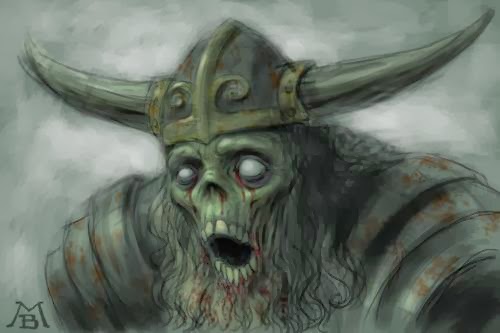ORIGIN
He is mainly in the folklore of the Alpine Countries, although he has his roots in Germanic folklore.
FIRST SIGHTED/RECORDED
His history reaches as far back as Pre Christian Germanic traditions go.
APPEARANCE
He is a beast like creature with a very demonic appearance. He is very hairy, usually black or brown. He also has cloven hoofs and the horns of a goat (some say he is actually that of a goat). He is also depicted as having a long protruding tongue. His appearance usually depends on what region you are hearing it from but it is generally all the same.
GENDER
Male
ALSO KNOWN AS
Grampus (meaning "Claw" in Old German), Klaubauf, Black Peter (Austria) Barti/Bartel, Niglobartel, Wubartl (Southern Austria) Pelzebock, Pelznickel (Southern Germany) Gumphinckel (Silesia) Krampusz (Hungary) Schmutzli (Switzerland) and many more.
REPELLED BY
There is nothing that they seem to be repelled by.
MAGICAL POWERS/SKILLS
They have no powers as such. They have the ability to see whether a child is naughty or not so they could possibly have the power of foresight.
HISTORY/ABOUT
Regardless of whether he is a Demon or not, he is known to be the accomplice of St Nicholas (sometimes he travels on his own). He is the one who punishes naughty kids during Yule. If the kids are only a little naughty then he will either leave them coal or swat them with Ruten (small bundles of Birch trees). If they are very naughty then he will carry them away in his sack and either drowns them, eat them or transport them to Hell. Traditionally, young men dress up as him and roam the streets scaring young children with rustling chains and bells. This will be done on the 1st week of December, usually on the 5th (the eve of St Nicholas). This is thought to represent the binding of the Devil by the church. It is also said to be a coming of age ritual.
CAN BE FOUND
He is always found accompanying St Nicholas (Santa Claus) in the regions of Austria, Southern Bavaria, South Tyrol, Hungary, Croatia and Slovenia.
TALES
Depending on what regions you go to, the tales differ. Parents use him as a scare tactic for their children. They tell them that if they don’t behave then he will either leave them coal or carry them away to hell. He also features on holiday greetings cards called Krampuskarten.
ANY SIGHTINGS?
These sightings are similar to those of Santa Claus. People all over the world believe that they have seen him but without any actual proof. There are bound to be a number of photos and video footage out there on the internet but no one can say for sure If it is real or not. I suppose it’s their word against ours.
SIMILAR CREATURES
Gryla, Badalisk, Yule Goat









